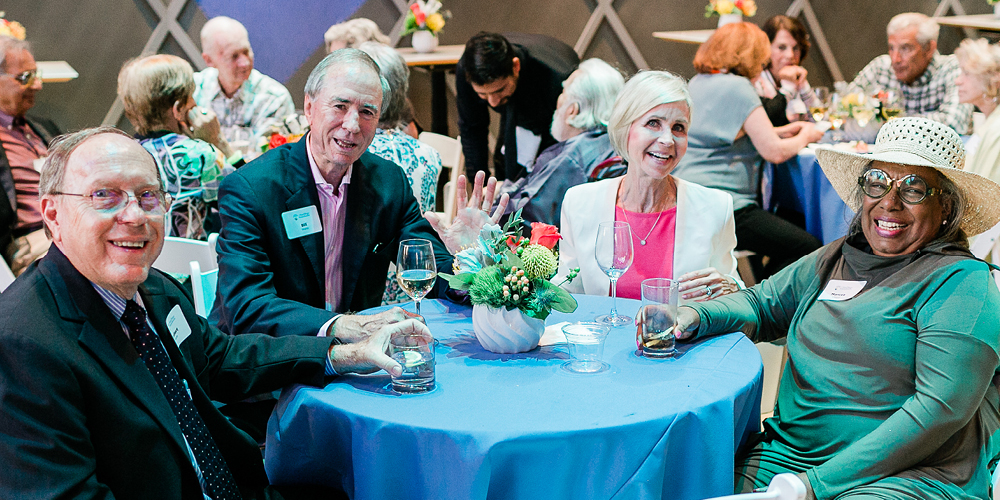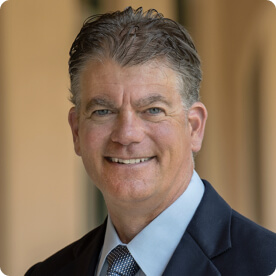As the second quarter of 2022 gets into full swing, many people are already starting to think ahead to year-end tax planning.
Perhaps you’re even reviewing client files to schedule annual meetings, update estate plans or adjust 2022 tax planning to align with the year’s realities of high inflation and stock market volatility.
At San Diego Foundation, we’re working with our donors to ensure that their charitable giving plans are aligned with what’s going on in 2022.
For example, we’re helping donors increase support for nonprofit organizations that align with their giving interests; we’re working with donors and their advisors to implement tax planning strategies involving charitable tax deduction; we’re engaging in conversations about how donors’ estate plans can leave a legacy to the community we all love.
We are grateful for the opportunity to work alongside so many of you as you’re advising your philanthropic clients. To that end, this issue of our newsletter features three topics related to the ways we can work together:
- Tax planning strategies for your younger, philanthropic clients
- Benefits of collaborating with the community foundation that surprise some advisors
- A quick reminder of why the SECURE 2.0 Act is on our radar
Helping Younger Clients Plan the Charitable Giving
Developing a thorough estate plan isn’t important only for Baby Boomers and Gen Xers.
Millennials, who now make up nearly a quarter of the population in the United States, may prove to be more enthusiastic planners than their parents and grandparents, according to the 2022 Estate Planning Study: Millennial Estate Planning Continues in a Pandemic.
What does this mean for planning gifts to charity?
Your millennial clients may be interested in setting up charitable gift vehicles earlier in their lives than some of your older clients. And because millennials tend to be better savers than their elders, it’s never too soon to discuss philanthropic intentions with your younger clients.
What’s an example of a giving technique that is well-suited for millennials?
As they build careers, switch jobs and start businesses, millennials’ incomes may ebb and flow from year to year. This makes “bunching,” or “bundling,” through a donor-advised fund (DAF) at SDF very useful.
Because contributions to DAFs are eligible for an immediate tax deduction – but are not required to be granted from the fund to charities right away – your client can “front load” donations into a donor-advised fund at a level that takes advantage of itemizing deductions during a high-income year, and then contribute less to the donor-advised fund in lower-income years.
Each year, your clients can recommend grants from their DAFs to their favorite charities, regardless of their income in that particular year.
Does bunching work with long-term appreciated assets?
Yes. Although it may seem obvious to professionals in the financial world, it’s not always top of mind for your clients to remember to donate long-term appreciated assets to their DAFs. This is especially true of millennial clients who only now might be reaching a point in their lives when they own stock or other assets that have gone up in value.
Donating an appreciated asset is tax-efficient because the asset given to the DAF or other public charity typically is deductible at the asset’s fair market value.
The charity, in turn, pays no capital gains tax on its sale of the asset, thereby generating more dollars to support charitable causes than your client would have had if the client had sold the asset and given the proceeds to charity.
Does it work to give real estate?
Yes! Real estate is an excellent long-term asset to donate to a donor-advised fund at SDF, especially now.
In late 2021, buying a second home appeared to be a strengthening trend. While higher interest rates and inflation might dampen that trend in the short-term, the ability to work from anywhere is a reality that’s unlikely to disappear. This means even your younger clients, not just retirees, may be buying and selling second homes and even rental properties. These clients could be good candidates to donate real estate to a donor-advised fund.
As with gifts of other long-term appreciated assets, a client’s gift of real estate to a DAF avoids capital gains taxes and generates more money for charitable causes than selling the property first and donating the proceeds.
The Edge: Partnering with Community Foundations
Advisors frequently comment that they’re surprised to discover the many ways SDF and other community foundations can help their clients, especially compared with national donor-advised fund programs affiliated with brokerage houses or financial services firms.
Here are three examples of the types of comments we have heard over the years from attorneys, accountants, and financial advisors:
- “I didn’t realize that SDF’s donor-advised fund offering was so much more than just an online account. My clients have loved getting to know other donors, accessing first-hand knowledge about what’s going on in the region, how their favorite charities are making a difference, and involving their children in philanthropic events and activities.”
- “I’m amazed at the variety of funds SDF can administer. Many of my clients have established donor-advised funds and have also augmented their philanthropic planning with a specialized fund such as a scholarship fund, designated fund or field-of-interest fund. A big bonus for my retirement-age clients is that the IRS allows SDF to receive a Qualified Charitable Distribution from a client’s IRA and place it into one of these specialized funds.”
- “My clients who sit on boards of directors of start-up charities have been so happy that grants from donor-advised funds – their own and others’ – count toward the IRS’ public support test. That’s really helped new organizations in our community get off the ground.”
QCD Enhancements: Steps Forward and Fingers Crossed
In legislative news, a recent flurry of activity in the Senate has inched forward the legislation known as SECURE 2.0.
Philanthropists and their advisors are watching this legislation closely because of the proposed inclusion of provisions that would adjust the annual $100,000 Qualified Charitable Distribution (QCD) cap for inflation and allow a one-time, $50,000 QCD to a charitable remainder trust or other split-interest gift.
It’s impossible to predict what might happen when the House and Senate bills are combined and reconciled and then brought to a final vote. But we are huge fans of QCDs and their ability to unlock charitable dollars.
Learn More
For nearly 50 years, we have partnered with a large network of wealth advisors, estate planning attorneys, tax planners and other advisors to help high-net-worth clients and families achieve financial planning objectives and charitable giving goals, while maximizing tax deductions.
If you’re interested in learning how we can help meet your clients’ financial planning and charitable giving goals, contact me at (858) 245-1508 or jrogers@sdfoundation.org.





